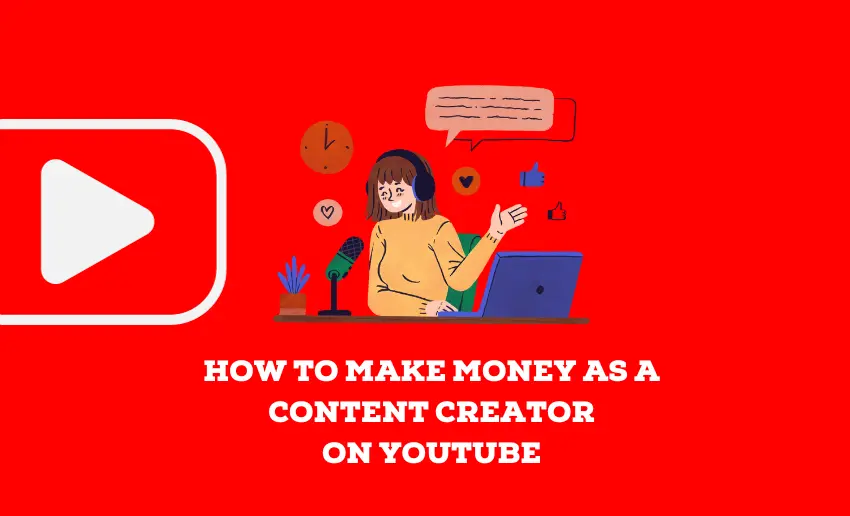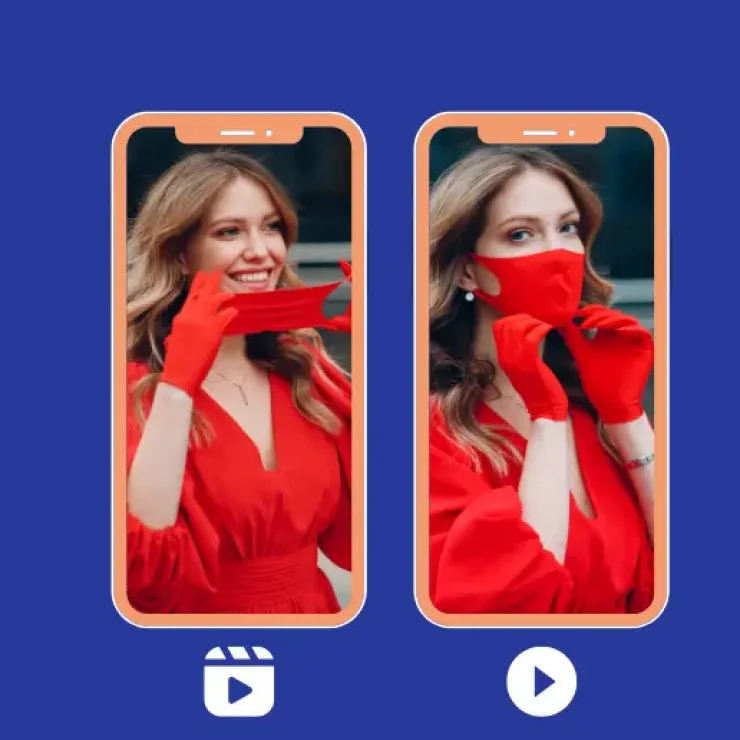Looking to turn your YouTube passion into a paycheck? As a content creator, the platform offers more than just views; it’s a gateway to earning. From showcasing your creativity to building a loyal audience, YouTube holds numerous opportunities for making money. With this in mind, learning how to make money as a content creator on YouTube becomes important.
Whether through ads, partnerships, or merchandise, understanding the ropes of monetization is key to turning your channel into a revenue-generating powerhouse.
In this guide, we’ll dive into actionable strategies and proven methods to help you navigate the path toward earning as a content creator on YouTube.
Here is how to make money as a content creator on YouTube
1. Join the YouTube Partner Program
The YouTube Partner Program lets creators make money from ads shown on their videos. To join, YouTubers need to meet specific criteria set by YouTube and ensure they reside in an eligible country or region. But you can still earn on YouTube without being a partner—setting up an AdSense account and getting views works, too. However, being a Partner simplifies things and opens more doors for earning.
On the YPP, creators can either money through any of the following:
A. Ad revenue share
When your videos get views, ads can make you money. Based on how many people interact with the ads placed in your content, YouTube shares a part of the ad income with creators. The more ad views or clicks a creator gets, the more they earn. To maximize this, focus on creating engaging videos that keep viewers hooked. Understand your audience and make content that keeps them coming back for more.
B. YouTube premium revenue
YouTube Premium subscribers pay a monthly fee for an ad-free experience. As a creator, you get a share of that subscription revenue based on how much Premium users spend watching your content. So, keep your audience engaged to encourage longer watch times and increase your revenue through Premium.
C. Super Chat
Live streaming lets your fans make their messages stand out or even share animated images during chat sessions. The YouTube Super Chat features allow viewers to buy highlighted messages or stickers during live streams.
Fans pay to have their messages stand out in the chat, supporting your channel. It’s like spotlighting their comments, making them the center of attention in the live chat. This adds a fun and interactive element to your streams, allowing your supporters to show their love and support more visibly. Creators can encourage interaction during live streams to allow their audience to use these features and support their channel.
D. Super Thanks
This feature lets fans purchase “Super Thanks” to show extra appreciation for your videos. Viewers can buy these and leave a thank-you message, which gets highlighted on your video. This creates a lively atmosphere where their support shines through. When your viewers pay for this feature, they not only enjoy a fun moment but also contribute to the vibrancy of your content. This engagement fosters a strong bond between you and your audience, making them feel valued and connected to your content.
2. Brand partnerships
Collaborating with brands opens doors to earning. Companies pay creators to feature products or services in their videos. It’s a win-win; they get exposure, and the creator gets paid. YouTube creators should only promote things that align with their channel’s theme and audience’s interests. Building a trustworthy relationship with your viewers is key. Choose brands that resonate with your content and values to maintain authenticity.
3. Sponsorship posts
Similar to brand partnerships, sponsorships involve companies paying you to promote their offerings. It might include mentioning their product/service in your video, giving a shoutout, or creating dedicated content around their brand. As with brand partnerships, transparency matters. It’s always important to let your audience know when content is sponsored. Building trust ensures your audience stays loyal.
4. Affiliate marketing
Affiliate marketing lets you earn a commission by recommending products, and it’s one of the most popular means of earning money on YouTube. Creators can share a unique link to a specific product, and when an audience buys through that link, they get a cut of the sale. The key here is honesty; recommend products you genuinely believe in. Your audience’s trust is your currency. Be transparent about your affiliate links, and focus on offering value rather than just pushing sales.
5. Merchandise sales
Create and sell your merchandise or products on YouTube. It could be anything, from branded clothing to eBooks or even courses. This way, you control what you offer, and your audience gets to support you directly. Ensure your merch aligns with your brand and resonates with your audience to boost sales.
6. License content to the media
If your content is unique and valuable, media outlets might want to use it. When this happens, other platforms or media outlets might come knocking. They’ll want to use what you’ve created, and that’s where licensing comes into play. You can grant them permission in exchange for payment.
Licensing allows them to use your content for a price. It’s a fantastic way to earn from something you’ve already made while expanding the audience beyond your channel. You can take the initiative by contacting media agencies to make the most of this opportunity. Alternatively, sometimes they’ll find you first, presenting an exciting chance to broaden your content’s horizons.
7. Crowdfunding
Crowdfunding offers a fantastic opportunity to unite your fans while gathering funds for your content creation ventures. It’s akin to your supporters coming together to back your upcoming significant project. YouTube simplifies the selection process by providing a list of authorized crowdfunding platforms.
Creators can use Patreon as it allows for consistent backing from their audience, fostering a sense of ongoing collaboration and community. On the other hand, platforms like GoFundMe or Kickstarter shine for those one-time campaigns, perfect for specific, singular projects or endeavors.
Engaging your audience through crowdfunding helps financially and strengthens the bond between you and your audience. It’s a chance for them to be part of your creative journey while enabling you to bring your visions to life.
Does YouTube pay creators for uploading videos?
No, when you upload videos to YouTube, you don’t automatically get paid for them. Videos aren’t set up for earning money right away. You must turn on monetization in your account settings to start making money on YouTube videos. Creators make money primarily through the YouTube Partner Program, which allows eligible channels to monetize their content through advertisements.
6 Steps to build a profitable YouTube channel
Make no mistakes: there are millions of YouTube channels that don’t make money. This is largely because not everyone on YouTube considers themselves creators and, as such, are not keenly interested in monetization.
1. Consistent content creation
Consistency is key on YouTube. Regularly uploading content keeps your audience engaged and coming back for more. Create a schedule that works for you and stick to it. Whether daily, weekly, or bi-weekly uploads, maintaining a predictable schedule helps build anticipation and keeps your viewers tuned in.
2. Quality over quantity
Focus on delivering high-quality content rather than just churning out videos. Invest time planning, filming, and editing to ensure your content is polished and engaging. Quality content attracts new viewers and retains your current audience, encouraging them to keep watching and sharing your videos.
3. SEO optimization
Understanding SEO (Search Engine Optimization) is crucial. Use relevant keywords in your video titles, descriptions, and tags to improve your video’s visibility in search results. Research popular search terms in your niche and incorporate them naturally into your content to reach a wider audience.
4. Abide by monetization rules
Make sure you stick to the rules for making money on YouTube. Your channel will be checked to ensure you’re following these policies:
- Adhere to Google AdSense policies.
- Follow the Community Guidelines.
- Respect copyright rules.
- Observe Monetization policies.
- Comply with YouTube’s Terms of Service.
YouTube keeps an eye on these policies to ensure channels meet their standards for monetization. Understanding and following these rules is important to avoid issues with your channel’s monetization.
5. Collaborations and networking
Partnering with other YouTubers or influencers can expose your channel to a broader audience. Collaborate on videos, participate in shoutouts, or engage in joint projects within your niche. Networking with community members can help increase your channel’s visibility and attract new subscribers.
6. Diverse content strategy
Offer a variety of content to cater to different viewer preferences. Experiment with different formats, topics, or styles while staying true to your channel’s theme. This diversity keeps your channel fresh and appeals to a wider audience, attracting viewers with varying interests.
What happens if the YouTube Partner Program Rejects me?
If your application to the YouTube Partner Program gets rejected, there are steps you can take:
- Start by reviewing the rejection reason. YouTube usually provides a reason, which could be related to content quality, policy violations, or not meeting eligibility criteria like watch hours or subscribers.
- Work on enhancing the quality and consistency of your videos. Focus on creating original, valuable, engaging content that adheres to YouTube’s policies.
- If the rejection was due to not meeting the minimum requirements, concentrate on growing your audience. Encourage viewers to subscribe and watch more of your content.
- Ensure your content aligns with YouTube’s Community Guidelines and AdSense policies. Avoid copyrighted material, misleading content, or anything that violates YouTube’s rules.
- If you believe there was a mistake or if you’ve made significant improvements, you can appeal the decision. YouTube allows creators to submit an appeal within 30 days of rejection.
- Keep refining your content, engaging with your audience, and following YouTube’s guidelines. Consistent improvement increases your chances of reapplying successfully in the future.
Remember, the YouTube Partner Program rejection isn’t the end, and after 30 days, you can submit a new application for the YPP.
In Summary
There are various pathways to monetize your YouTube channel, from ad revenue to brand partnerships, affiliate marketing, and more. This presents creators with the opportunity to diversify income sources. To those starting their YouTube journey, remember that success doesn’t come overnight. Stay dedicated, focus on creating value for your audience, and remain passionate about your content.








